I love sushi, but I don't always understand the terms I see on the menu, or the subtleties of how to eat it. What is the difference between sashimi and maki? What am I supposed to do with the green and pink stuff that comes on the side? Should I eat it with chopsticks, or with my fingers?
If you have the same questions, fear not! I have gathered all the information you need to order and eat sushi with confidence.
Let's start with a bit of history. The original form of sushi was a Japanese staple made from salted fish and fermented rice. The word "sushi" means "sour" and refers to the flavor of the fermented original. But over time, sushi has changed into being made with fresh fish instead of salted and rice flavored with vinegar rather than fermented. It was adopted by American eaters and has further evolved into its own style here.
Now let's look at some terms. First of all, what defines "sushi"? Most people think of sushi as being raw fish, but what actually makes it sushi is the rice, not the fish! In fact, Western-style sushi is frequently made with cooked fish and/or vegetables, in addition to the more traditional raw fish. But whatever it is, if it is wrapped in sushi rice (short grain rice seasoned with vinegar and sugar), it's sushi.
Something that isn't sushi, but that many people think of as sushi, is "sashimi." Sashimi does not involve rice. It is simply strips of raw fish. It is often served with the same condiments as sushi: wasabi, soy sauce, and ginger. (More about those later.)
What do you get when you put sashimi on top of sushi rice? You get a type of sushi called ngiri. Ngiri takes a flattened ball of sushi rice and tops it with strips of raw fish. It is designed to be eaten with the hands, and is usually served in pairs.
There are a number of variations of maki, including temaki, which is made individually by wrapping the nori into a cone shape; hosomaki, which are rolls containing only a single filling besides the nori and rice; futomaki, larger rolls filled with combinations of ingredients; and uramaki, which reverses the nori and rice so the rice is on the outside.
Any of these rolls may also be garnished with fish roe or sesame seeds (white or black), and may be drizzled with a sauce. All are generally served with wasabi, soy sauce, and pickled ginger.
Maki rolls have different names based on their fillings. Although many sushi restaurants create their own flavor combinations, there are a number of relatively universal types. (Much like cocktails, where everyone serves Manhattans and Cosmopolitans, but also their own signature drinks.) Here are a few of the more common types of maki that you're likely to see on American menus, with their fillings.
- California roll: Uramaki style (rice on the outside), the filling includes avocado, crabmeat (usually imitation), and cucumber, and is frequently rolled in vivid orange tobiko (flying fish roe).
- Tempura roll: Also uramaki style, the filling includes shrimp dipped in tempura batter and fried, plus vegetables like avocado and cucumber. It is frequently rolled so the shrimp tail sticks out of some of the rolls, and may be rolled in tobiko.
- Spicy tuna roll: Always contains raw tuna mixed with a spicy mayonnaise, but may be made uramaki style or not, the tuna may be minced or in large chunks, and it may include vegetables or only the tuna. It is frequently garnished with black sesame seeds.
- Dragon rolls: These are similar to tempura rolls but with a fancier presentation. They are uramaki filled with tempura shrimp, avocado, cucumber, and sometimes eel. However, they are presented in the shape of a dragon's body, topped with black sesame seeds and/or tobiko and strips of avocado which resemble scales, and are then drizzled with spicy mayonnaise and unagi sauce (a thick, sweetened soy sauce often served with eel).
- Philadelphia roll: May be served uramaki style or not, but is filled with salmon (raw or more often smoked), cream cheese, avocado, and cucumber.
- Rainbow roll: Something of a maki-ngiri hybrid, rainbow rolls are rolled like maki, but draped with different types of sashimi or slices of avocado to make different bright colors. Filling is usually imitation crab, cucumber, and avocado, plus raw salmon, tuna, shrimp, or yellowtail.
- Spider roll: Yet another that may or may not be served uramaki style, the filling includes tempura soft-shelled crab, cucumber, avocado, and spicy mayonnaise. It is often served with crab legs sticking out of some of the rolls.



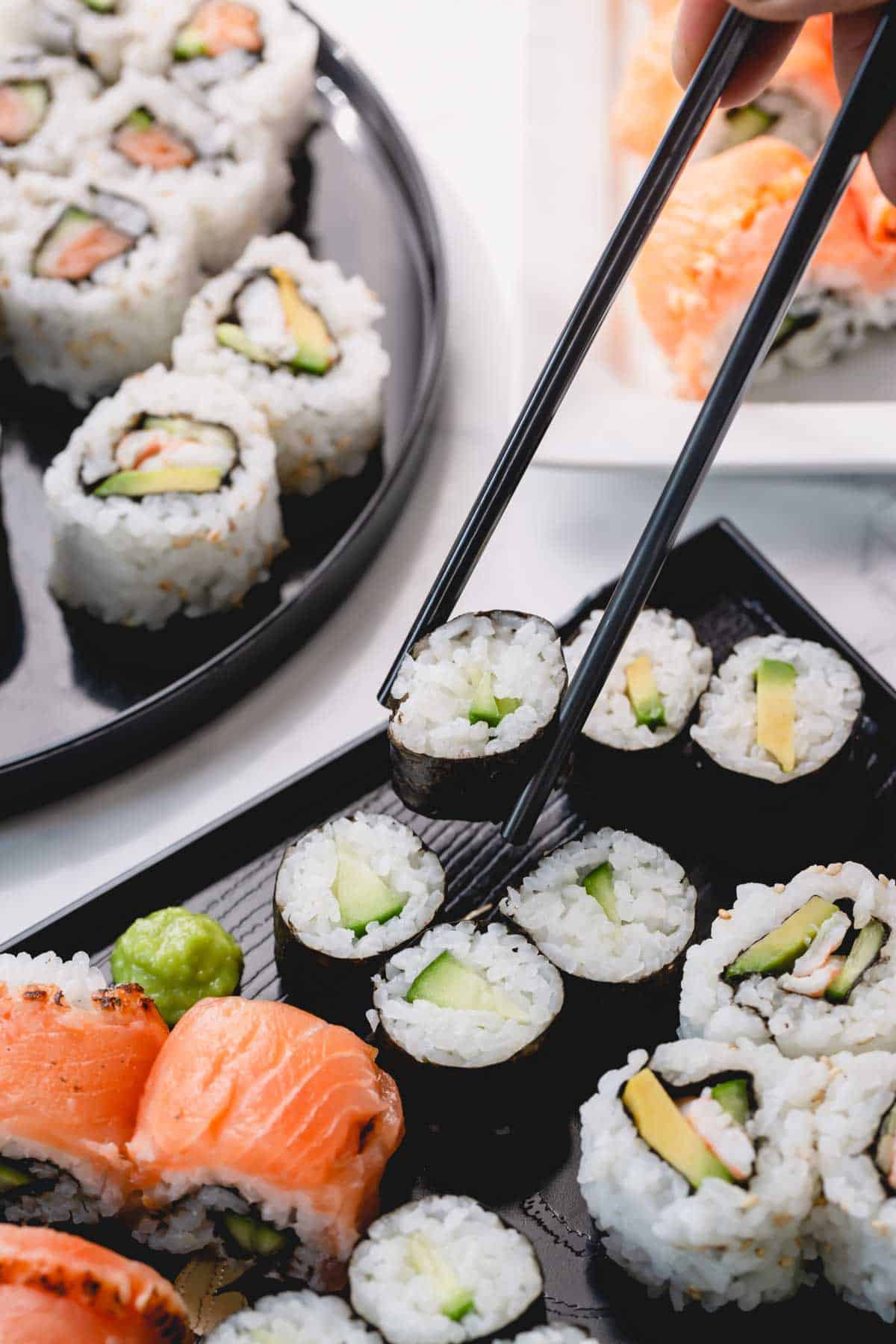
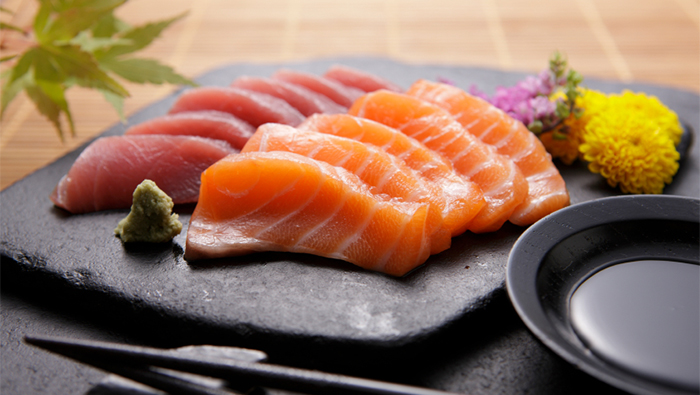
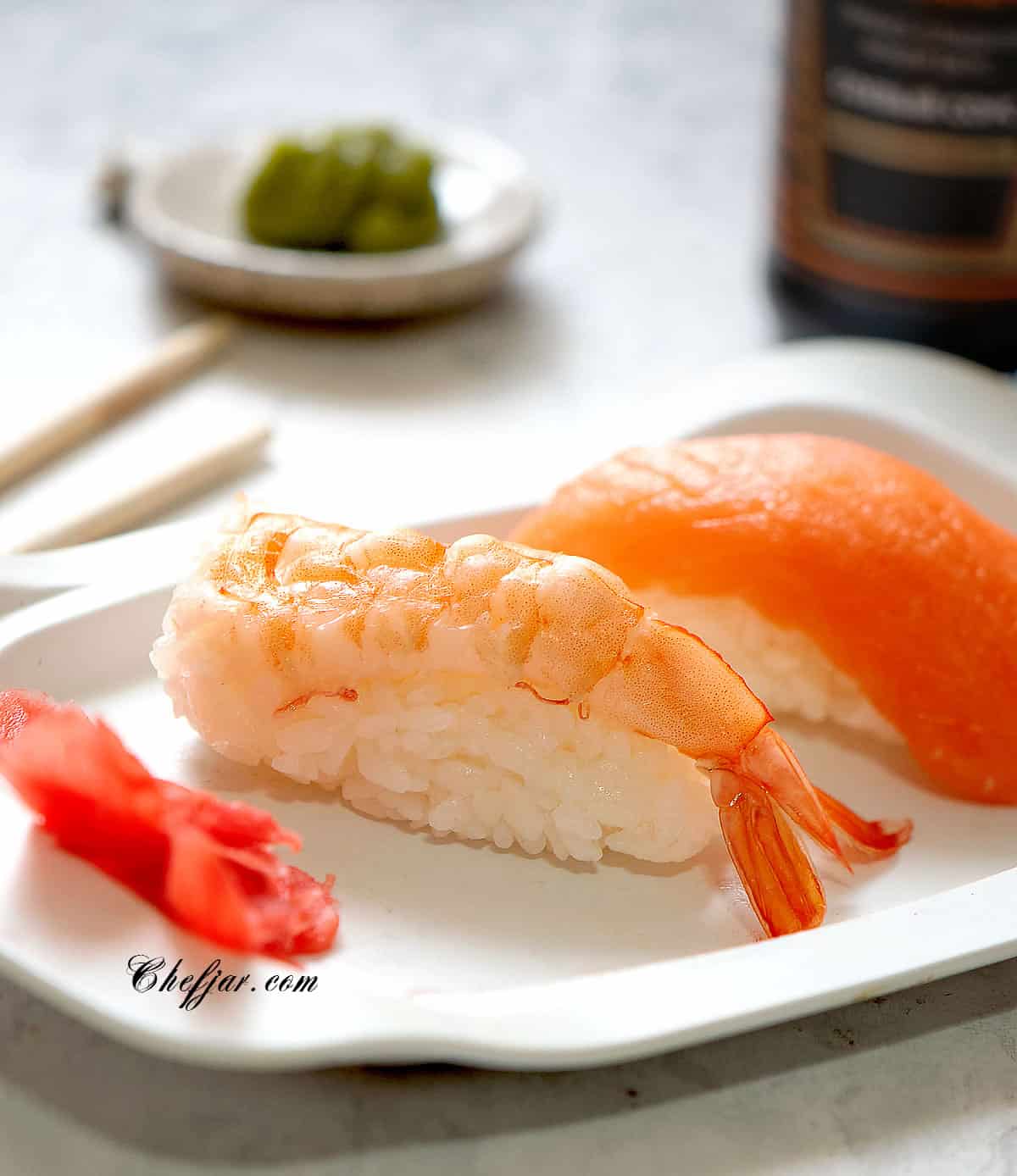

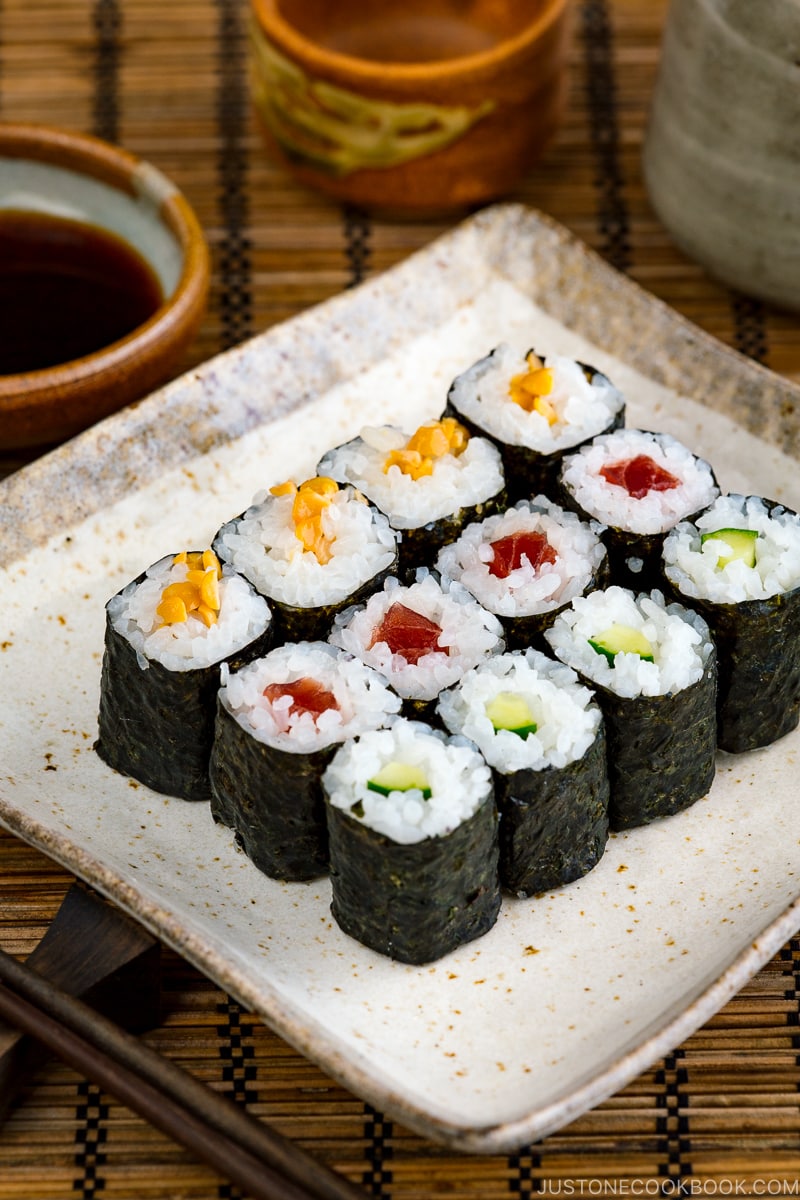
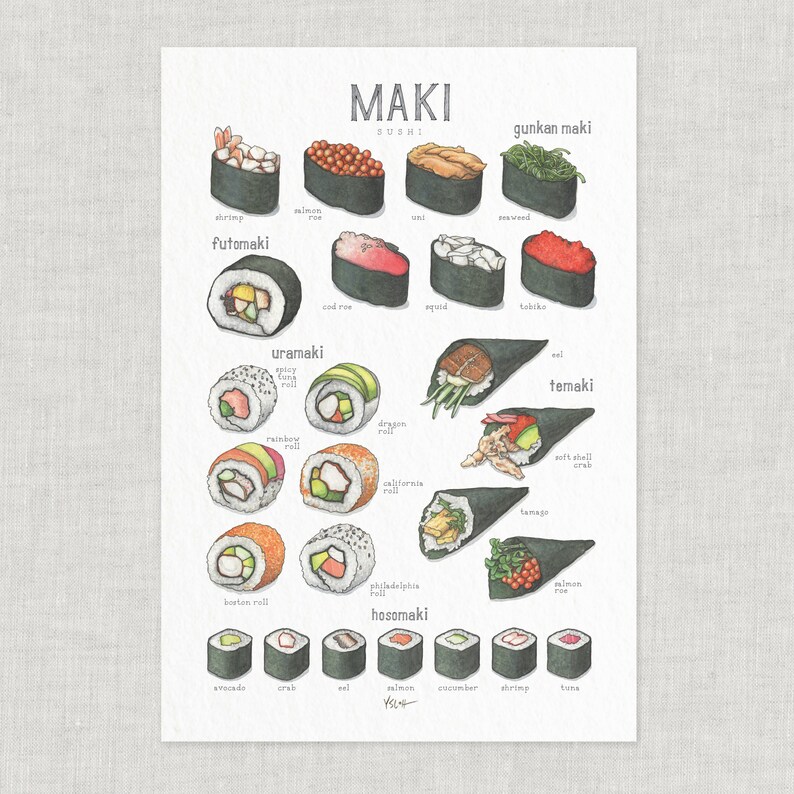

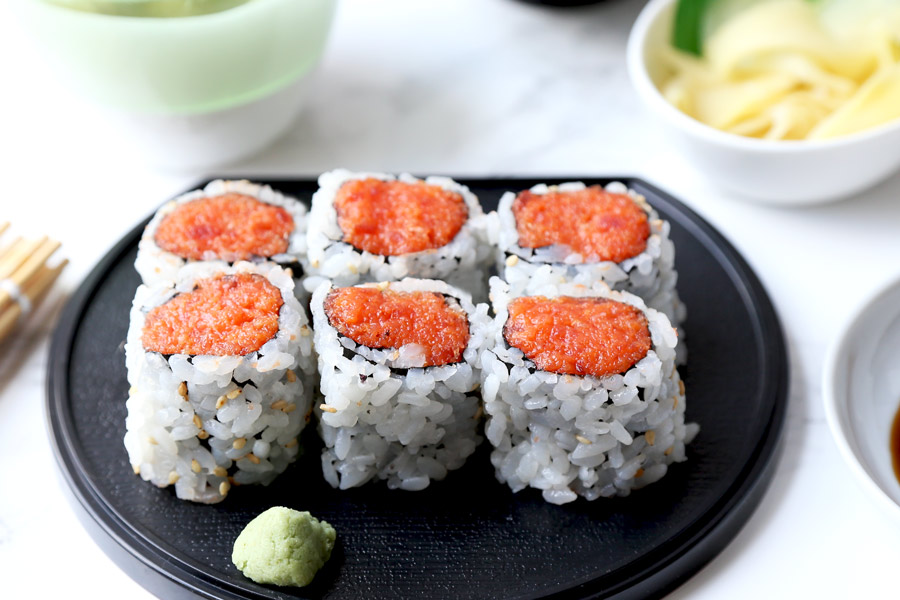


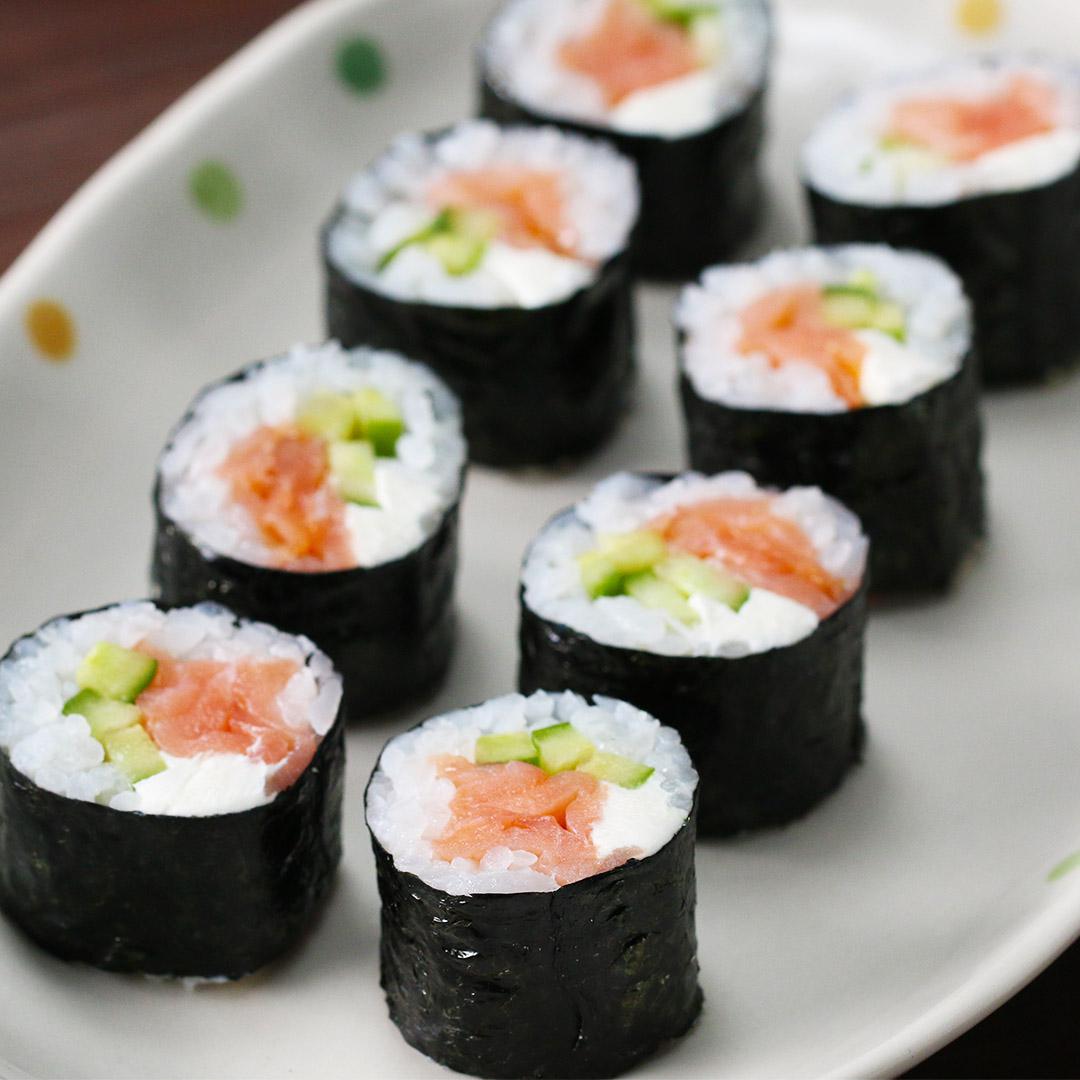
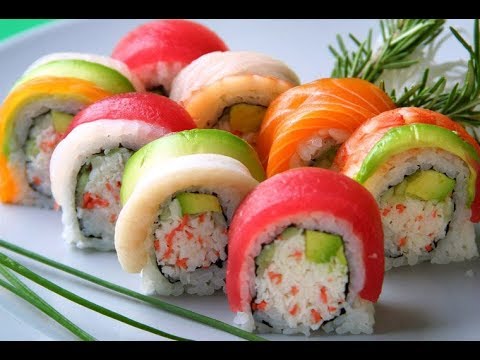
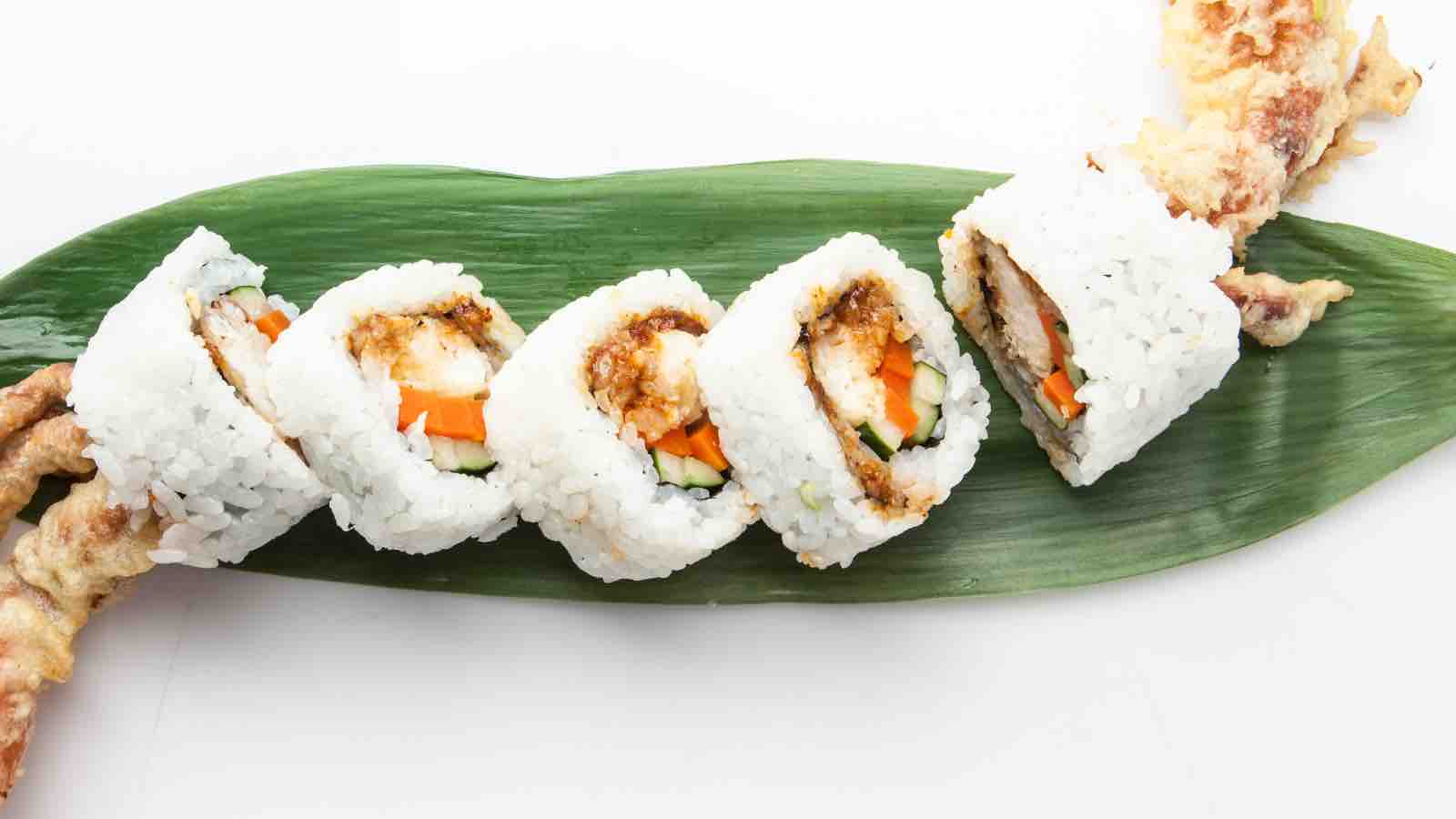
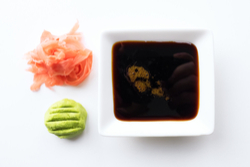
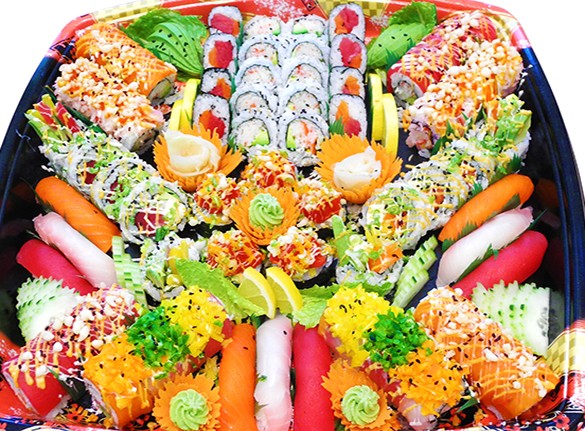
No comments:
Post a Comment